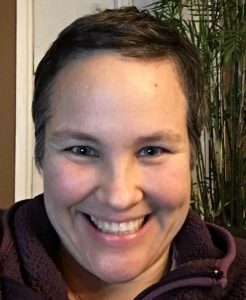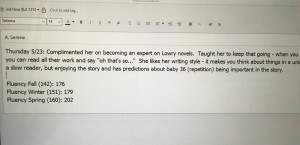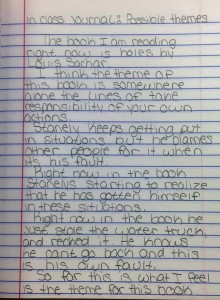
We bought our daughter a new Strider bike for her upcoming birthday. These bikes have no pedals, and they teach kids how to balance and use their bodies to move the bike and steer. The “Learn to Ride Guide” sets out “four essential steps” to ensure your child will ride successfully:
- Adjusting the bike properly to fit the child.
- Being a cheerleader, not a coach.
- Letting the child set the pace.
- Supporting the child — NOT the bike!
As a reading and writing workshop teacher, I really fell in love with this guide, as these four essential steps could inform what we do in a workshop classroom.
Adjust the Teaching to Fit the Student
Conferring with kids is basically adjusting your teaching to meet the students where they are.
Using formative assessment tools, like a quick exit ticket, you can adjust your entire lesson. And after looking at class writing samples, you can decide if the majority of students actually need that mini-lesson on punctuation–or if you can move on to something else.
Know When to Cheer and When to Coach
As a literacy teacher, you are so many things at different times, and for different students.
- Sometimes you are a coach, honing in on specific skills that your students need and explicitly teaching them, while giving them drills that will help strengthen the skills.
- Sometimes you are a cheerleader, praising what students are doing well, and lifting them up when they are being too hard on themselves or just not getting it–yet.
- Sometimes you are a teammate, sharing in the discovery and laughter of the class.
- Sometimes you are a spectator, observing in the stands and letting the writing and reading play out.
- Sometimes you are the referee, making sure the rules of the workshop classroom are being followed.
Let the Students Set the Pace
There has to be some level of commitment on the part of the student with the work that you do in a classroom. I think this is where choice comes into play.
Giving students choice about their writing topics, and in the titles or genres they read, allows students to set their own pace. Even giving them options in when assignments are due, or in how they can demonstrate their learning, can help students set their own timetable and be in control of their learning.
Support the Writer and Reader, Not the Writing and Book
Teachers teach children, not content. When you support the student, and the content comes second, you can really make a difference in the life of that student. This doesn’t just mean forming a relationship with each student; it means deciding what they need next in that conference or small group situation.
Each new skill our students and children learn has to be practiced. As teachers and parents we need to be there for our kids–but we also need to know when to take a step back, and let them go it alone. If we keep these four essential steps in mind, we can help kids become independent, skilled writers and readers on the road of life!
 Caroline Thompson (@TeacherThompson) taught middle school ELA for twelve years in Lake Orion before becoming a stay-at-home mom. She supports AARI teachers for Oakland Schools as an independent literacy consultant in the areas of digital media, professional development, and non-fiction resources. Caroline is a Reading and Writing Workshop advocate, a 2008 Oakland Writing Project Teacher Consultant, and a 2009 Oakland County Outstanding Teacher of the Year Nominee. She has a BA in English from Michigan State University and a Masters in the Art of Teaching Reading from Oakland University. She lives in Berkley, Michigan with her husband and their three year old daughter.
Caroline Thompson (@TeacherThompson) taught middle school ELA for twelve years in Lake Orion before becoming a stay-at-home mom. She supports AARI teachers for Oakland Schools as an independent literacy consultant in the areas of digital media, professional development, and non-fiction resources. Caroline is a Reading and Writing Workshop advocate, a 2008 Oakland Writing Project Teacher Consultant, and a 2009 Oakland County Outstanding Teacher of the Year Nominee. She has a BA in English from Michigan State University and a Masters in the Art of Teaching Reading from Oakland University. She lives in Berkley, Michigan with her husband and their three year old daughter.




